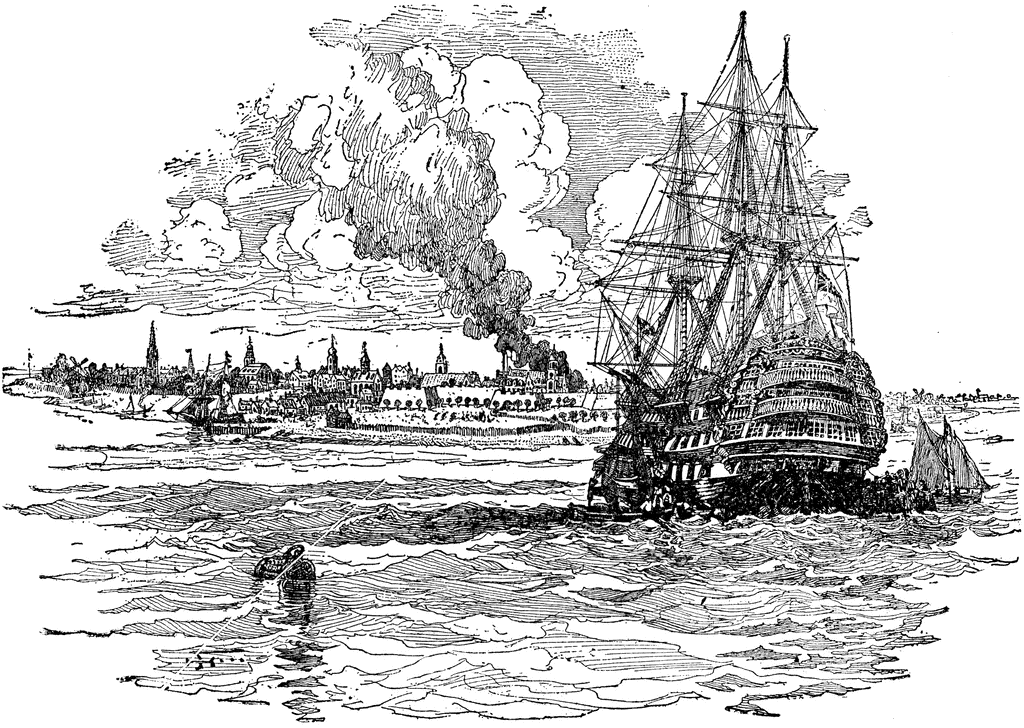ew York’s location with its good access to the
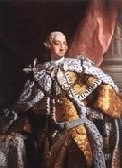 interior, made it one of the most important centres of commerce on the continent and since being where the French tried to confine
the British during the seven year war, it had associated itself closely with the mother country, possibly more
so than other American cities, consequently its population was largely loyal to the King.
interior, made it one of the most important centres of commerce on the continent and since being where the French tried to confine
the British during the seven year war, it had associated itself closely with the mother country, possibly more
so than other American cities, consequently its population was largely loyal to the King.
Of course many there had protested alongside other colonies against the various taxes Britain had tried to introduce and
much to Britain's disapproval had a thriving smuggling industry, but not wanting to pay taxes and the threat Britain posed to their
various smuggling activities, was one thing, quite another was looming on the horizon in 1775 and they didn't want it. So New York asked
Britain for arms to defend themselves against the inevitable breakdown of law and order, that replacing their justice system
with military rule would bring. A rule they considered no better than was used by their own Godless rats and vermin, who would
be released to plague the city.
Aware of this distrust, Washington ordered his militias to disarm the citizens of New York’s Sept 1775, but this proved too
dangerous a task, as at least half of the colony was Loyalist, so realising 'the place was infested with Tories’ he sent
in 10,000 militiamen to overwhelm the city and put it under martial law.
 This law included having to use Congress's devaluing paper money and Anglian churches no longer allowed
to conduct services with prayers for the king, which then closed rather than submit, but had marked them out for Washington to have their
bells removed and melted down, depriving them the chance of rejoicing if their hoped for liberation came.
This law included having to use Congress's devaluing paper money and Anglian churches no longer allowed
to conduct services with prayers for the king, which then closed rather than submit, but had marked them out for Washington to have their
bells removed and melted down, depriving them the chance of rejoicing if their hoped for liberation came.
As news reached New York of the Declaration of independence on the 9th July it caused a celebrating crowd of militia and white rebels
(not black as depicted on engraving) to pull down the statue of George III in the city centre, to the dismay of the Loyalists.
Responding to this the British amassed 23,000 of its own and Hessian troops on Staten Island after having been carried there by
the largest armada Britain had ever mounted.
Then after a stormy night with the wind still howling across the bay on the morning of 22nd August, British & Hessian troops
embarked their small boats to sail and land 15,000 men unopposed at Gravesend Bay on Long Island. Washington’s 19,000 men were in
good defensive positions on the Brooklyn heights and in forts overlooking the Hudson, having previously burnt down any buildings
thought to be of use the enemy.
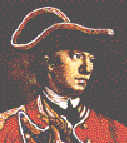 The British advanced but quickly lost 40 men from staged hit and run ambushes, undaunted they
then split their attack, one concentrating artillery at the rebel’s strongest point and had the other circle around to out
manoeuvre them from behind. The tactic was a complete success with the British losing only 350men including 20 officers
whereas the rebels lost 3000 killed and 2000 taken prisoners, their wounded numbers were estimated at around a further 2500.
The British advanced but quickly lost 40 men from staged hit and run ambushes, undaunted they
then split their attack, one concentrating artillery at the rebel’s strongest point and had the other circle around to out
manoeuvre them from behind. The tactic was a complete success with the British losing only 350men including 20 officers
whereas the rebels lost 3000 killed and 2000 taken prisoners, their wounded numbers were estimated at around a further 2500.
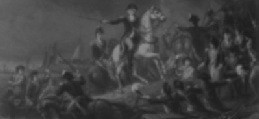 Then as torrential rain had started, Howe was reluctant to press ahead to mop up, fearing the bayonet inflicted carnage of
brethren, so as the Royal Navy ships offshore would cut off the rebel's
escape, he decided to just corner them hoping for a surrender in the morning, but as dawn approached a dense fog descended, which prompted
Washington to say ‘Howe was either a friend or no general’, then had the camp fires built up so to last and his men
evacuated across to New York under cover of the fog.
Then as torrential rain had started, Howe was reluctant to press ahead to mop up, fearing the bayonet inflicted carnage of
brethren, so as the Royal Navy ships offshore would cut off the rebel's
escape, he decided to just corner them hoping for a surrender in the morning, but as dawn approached a dense fog descended, which prompted
Washington to say ‘Howe was either a friend or no general’, then had the camp fires built up so to last and his men
evacuated across to New York under cover of the fog.
Map of Battle
Howe far from being discouraged thought he could now get New York without
further loss, many of Washington’s exhausted men also thought the same, as many deserted, looting as they did.
Washington's remaining men then entrench themselves in breastworks on Manhattan Island, so on the 15th Sept Howe launched an amphibious
assault to land at Kip’s Bay, while having the Royal Navy bombard the rebel positions which quickly blew them to pieces, resulting in
rebels fleeing all directions and Howe taking another 300 rebel prisoners, but Washington regrouped his men yet again and retreated to
Harlem Heights
The British were heartened by the utmost joy they received from New York's inhabitants, with officers being carried shoulder high
and crowds waving their previously hidden union flags, while pointing out the homes of rebels (although one cynic wrote ‘they
couldn’t wait to get their hands on British gold after having to use worthless Congress paper money’ and again able to have
their preferred English tea instead of Hancock’s expensive Dutch & French rubbish). Also as the worst of the rebel sympathisers
departed the city, it allowed the majority (Loyalists) to then feel safe, so they could quickly settle back to business,
selling to the British all their requirements at reasonable prices.
However rebel Major Gen. Greene insisted as New York had to be deserted and at least two thirds of it belonged to 'Tories', it
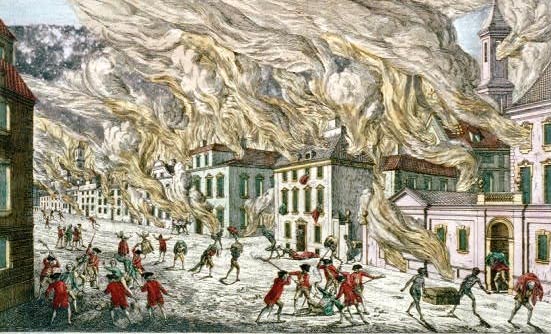 should be burnt to the ground, so on the night of 20th Sept, a fierce fire was started which quickly tore itself throughout the city and with
no church bells to warn people or any fire engines to be found, having been removed by rebels, it destroyed 500 houses before
being brought under control. Many rebels were caught red handed with matches and fireballs or other combustibles on them to spread
the fire, all of who seem to have been despised New Englanders, so they received the rough justice being dealt out by the populace
of throwing them into the fires.
should be burnt to the ground, so on the night of 20th Sept, a fierce fire was started which quickly tore itself throughout the city and with
no church bells to warn people or any fire engines to be found, having been removed by rebels, it destroyed 500 houses before
being brought under control. Many rebels were caught red handed with matches and fireballs or other combustibles on them to spread
the fire, all of who seem to have been despised New Englanders, so they received the rough justice being dealt out by the populace
of throwing them into the fires.
As intended, this was to deny the British valuable winter housing, but as nearly all the
houses burnt down belonged to Loyalist's, Howe took over the equivalent number of rebel sympathizer's homes, inorder to house burnt out
Loyalists and his men, using Presbyterian churches as stables.
But the Fire was again partly caused by Howe being reluctant to advance on Washington’s position and finishing off his dis-spirited men,
which by the time he advanced again, Washington had retreated further away to White
Plains. Where again Howe took his time to attack them, deciding to on the 28th Oct, but this time his Hessian advance ranks were
completely scattered by rebel's musket balls being embedded with nails, however with rebels then only interested in the dead and
dying's rum, got drunk and fell back only to be saved by more torrential rain.
Click here to see Subsequent Revolutionary War Battles
With Howe off chasing Washington about the country, New York was left in the hands of Sir Henry Clinton and what he thought was a
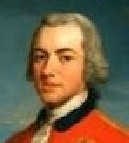 dangerously few 7,000 men to defend a rapidly growing number of displaced Loyalists. Who as time went by became less friendly
being subjected to severe overcrowding, a shortage of food and general unpleasant conditions. On top of this, they were largely
left to defend themselves, as Howe had taken most of the troops to Philadelphia.
dangerously few 7,000 men to defend a rapidly growing number of displaced Loyalists. Who as time went by became less friendly
being subjected to severe overcrowding, a shortage of food and general unpleasant conditions. On top of this, they were largely
left to defend themselves, as Howe had taken most of the troops to Philadelphia.
So a number of Loyalist militia units were formed, mainly by aggrieved men on Long Island wishing to go on raids, but Clinton being dead
set against the use of terror tactics, rarely gave them the chance, but he did allow them to go on expeditions into Connecticut
to free fellow Loyalists being held there. However these forays nearly always turned into a rebel style raiding party to capture
stores (often those supplied to them by the French) and take prisoners adding to those already captured by the British.
With so many buildings burnt down by rebels and having thousands of them prisoners, the only place they could be kept securely was on the ships.
Being a prominent Loyalist, Joshua Loring had been attacked by mobs in Boston
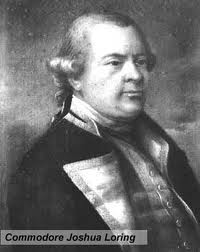 and undoubtedly would have been singled out for a tar and feathering by rebels when the British left, he was therefore
one of those who fled to Halifax with them, leaving his stately mansion and large estate.
and undoubtedly would have been singled out for a tar and feathering by rebels when the British left, he was therefore
one of those who fled to Halifax with them, leaving his stately mansion and large estate.
After the British liberated New York he then travelled there and presumably so set on revenge, seems to have exchanged with Lord Howe the
favours of his lovely wife Elizabeth for being appointed Commissioner of prisoners to then extract his compensation by receiving prisoner
release payments (bail). But with so many rebel prisoners in poor health, he seems to have been
oblivious to them languishing on disease ridden prison ships in New York harbour, not helped by being under the supervision of other
persecuted Loyalists, so rebels were dying every day. Exaggerated claims have been made of a total 11,500 dying during the war, but
with redcoat prisoners being held in just as appalling conditions and Loyalist militiamen often being hung as traitors, it wouldn't be surprising.
Loyalists were also the majority in neighbouring New Jersey and continued to put up stiff resistance against the rebel's intimidation, with
at least 2000 of them serving with the New Jersey Volunteers who played a game of cat and mouse with the rebels throughout the war. Also
being an enterprising lot they forged the continental paper money that rebels were forcing people to use, which was pretty worthless anyway,
but by flooding the area with it, the robbery was even more blatant.
Benjamin Franklin’s Loyalist son William obtained royal approval to organise independent Loyalist militias and recruited in New Jersey, but what
with Clinton’s constant meddling, rebel propaganda and somehow the lists of those enlisting too often getting into rebel hands, who would then
hang or torture them to death, the effectiveness of these militias was limited.
As the French and the remains of Washington's army closed on Cornwallis in Virginia, Clinton sent Benidict Arnold and his
American Legion (a regiment made up of approx.1600 rebel deserters) on what he thought would be a diversionary raid to Fort Griswold,
Connecticut on 6 Sept 1781 two weeks before Yorktown. This he was hopeing would draw attention away from Cornwallis's predicament, but the gambit had no
effect, other than by killing 115 rebels in taking the fort, he was accused of commiting an atrocity, even though it was no different
than what he had done as rebel. However Clinton was making the mistake of thinking Washington would want to defend his own and send troops to where the
British attacked, but Washington was only interested in winning and to see where men were taken from, to then attack there. Stony Point on
16th July 1779 was such a brutal lesson and should have served as a reminder that the rebels didn't often treat loyalist prisoners as soldiers but
as traitors and hung them.
For what happened at the end of the war click here
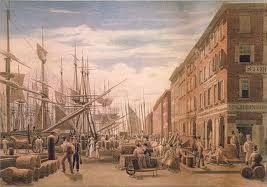
 interior, made it one of the most important centres of commerce on the continent and since being where the French tried to confine
the British during the seven year war, it had associated itself closely with the mother country, possibly more
so than other American cities, consequently its population was largely loyal to the King.
interior, made it one of the most important centres of commerce on the continent and since being where the French tried to confine
the British during the seven year war, it had associated itself closely with the mother country, possibly more
so than other American cities, consequently its population was largely loyal to the King.
 This law included having to use Congress's devaluing paper money and Anglian churches no longer allowed
to conduct services with prayers for the king, which then closed rather than submit, but had marked them out for Washington to have their
bells removed and melted down, depriving them the chance of rejoicing if their hoped for liberation came.
This law included having to use Congress's devaluing paper money and Anglian churches no longer allowed
to conduct services with prayers for the king, which then closed rather than submit, but had marked them out for Washington to have their
bells removed and melted down, depriving them the chance of rejoicing if their hoped for liberation came.
 The British advanced but quickly lost 40 men from staged hit and run ambushes, undaunted they
then split their attack, one concentrating artillery at the rebel’s strongest point and had the other circle around to out
manoeuvre them from behind. The tactic was a complete success with the British losing only 350men including 20 officers
whereas the rebels lost 3000 killed and 2000 taken prisoners, their wounded numbers were estimated at around a further 2500.
The British advanced but quickly lost 40 men from staged hit and run ambushes, undaunted they
then split their attack, one concentrating artillery at the rebel’s strongest point and had the other circle around to out
manoeuvre them from behind. The tactic was a complete success with the British losing only 350men including 20 officers
whereas the rebels lost 3000 killed and 2000 taken prisoners, their wounded numbers were estimated at around a further 2500.
 Then as torrential rain had started, Howe was reluctant to press ahead to mop up, fearing the bayonet inflicted carnage of
brethren, so as the Royal Navy ships offshore would cut off the rebel's
escape, he decided to just corner them hoping for a surrender in the morning, but as dawn approached a dense fog descended, which prompted
Washington to say ‘Howe was either a friend or no general’, then had the camp fires built up so to last and his men
evacuated across to New York under cover of the fog.
Then as torrential rain had started, Howe was reluctant to press ahead to mop up, fearing the bayonet inflicted carnage of
brethren, so as the Royal Navy ships offshore would cut off the rebel's
escape, he decided to just corner them hoping for a surrender in the morning, but as dawn approached a dense fog descended, which prompted
Washington to say ‘Howe was either a friend or no general’, then had the camp fires built up so to last and his men
evacuated across to New York under cover of the fog.
 should be burnt to the ground, so on the night of 20th Sept, a fierce fire was started which quickly tore itself throughout the city and with
no church bells to warn people or any fire engines to be found, having been removed by rebels, it destroyed 500 houses before
being brought under control. Many rebels were caught red handed with matches and fireballs or other combustibles on them to spread
the fire, all of who seem to have been despised New Englanders, so they received the rough justice being dealt out by the populace
of throwing them into the fires.
should be burnt to the ground, so on the night of 20th Sept, a fierce fire was started which quickly tore itself throughout the city and with
no church bells to warn people or any fire engines to be found, having been removed by rebels, it destroyed 500 houses before
being brought under control. Many rebels were caught red handed with matches and fireballs or other combustibles on them to spread
the fire, all of who seem to have been despised New Englanders, so they received the rough justice being dealt out by the populace
of throwing them into the fires.
 dangerously few 7,000 men to defend a rapidly growing number of displaced Loyalists. Who as time went by became less friendly
being subjected to severe overcrowding, a shortage of food and general unpleasant conditions. On top of this, they were largely
left to defend themselves, as Howe had taken most of the troops to Philadelphia.
dangerously few 7,000 men to defend a rapidly growing number of displaced Loyalists. Who as time went by became less friendly
being subjected to severe overcrowding, a shortage of food and general unpleasant conditions. On top of this, they were largely
left to defend themselves, as Howe had taken most of the troops to Philadelphia.
 and undoubtedly would have been singled out for a tar and feathering by rebels when the British left, he was therefore
one of those who fled to Halifax with them, leaving his stately mansion and large estate.
and undoubtedly would have been singled out for a tar and feathering by rebels when the British left, he was therefore
one of those who fled to Halifax with them, leaving his stately mansion and large estate.
